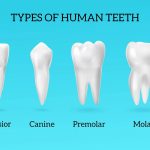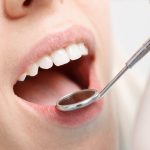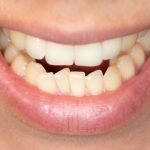Why Are My Teeth See Through? Causes and Solutions Explained

Have you ever looked in the mirror and noticed that your teeth seem to be transparent? This can be a worrying and confusing experience, leaving you wondering whether this is a sign of a serious dental issue. The truth is that transparent teeth are not uncommon, and there are a number of reasons why this can occur. In this article, we’ll explore the causes of see-through teeth, as well as some possible solutions to restore the appearance and health of your teeth. One of the most common causes of transparent teeth is enamel erosion. Enamel is the hard outer layer of your teeth that protects them from damage and decay. Over time, this protective layer can become worn down, exposing the softer, translucent layer of dentin underneath. This can be caused by a number of factors, including acidic foods and drinks, tooth grinding, and aggressive brushing. We’ll delve deeper into the causes of enamel erosion and explore some ways to prevent and treat it to restore the natural opacity of your teeth.
Seethrough teeth, also known as translucent teeth, can be a cause for concern for many individuals. This condition occurs when the enamel, the hard, outer layer of teeth, becomes thin and allows the underlying dentin to show through. This can be caused by a variety of factors, including genetics, aging, grinding or clenching of teeth, and acidic foods or drinks. In addition, certain medical conditions or medications can also contribute to seethrough teeth. While this condition may not necessarily be harmful to one’s oral health, it can affect the appearance of one’s smile and cause sensitivity to hot or cold temperatures. Treatment options for seethrough teeth may include dental bonding, veneers, or in severe cases, a crown or root canal.
Maintaining healthy teeth is crucial not only for a beautiful smile but also for overall health and well-being. Poor dental hygiene can lead to a host of dental problems such as cavities, gum disease, and tooth decay, which can eventually lead to tooth loss. Additionally, research has shown that poor dental health can also contribute to larger health issues such as heart disease, stroke, and diabetes. It is important to practice good oral hygiene habits such as regular brushing, flossing, and dental check-ups to prevent these issues and maintain strong, healthy teeth. By taking care of your teeth, you can ensure a healthy and confident smile for years to come.
Causes of SeeThrough Teeth

See-through teeth, also known as translucent teeth, is a dental condition characterized by the visible transparency of the teeth. It is a common dental concern that can affect anyone regardless of their age or gender. There are different factors that can contribute to the development of see-through teeth. One of the primary causes is enamel erosion, which occurs when the protective layer of the teeth wears away. This can be due to various factors such as acidic foods and drinks, frequent brushing, and tooth decay. When the enamel is eroded, the underlying layer of the tooth, known as dentin, becomes more visible, resulting in see-through teeth. Another common cause of see-through teeth is genetics. Some people are born with thinner enamel or less dentin, making their teeth naturally more translucent. Other factors that can contribute to the development of see-through teeth include aging, hormonal changes, and certain medical conditions that affect dental health, such as bulimia and gastroesophageal reflux disease (GERD). Overall, see-through teeth can be caused by a combination of several factors, and it is essential to identify the underlying cause to determine the appropriate treatment and prevent further damage to the teeth.
Enamel erosion is a dental condition characterized by the gradual wearing away of the outer layer of the teeth. This can occur due to various factors, including acidic foods and beverages, certain medications, and even vigorous brushing. As enamel is the hardest tissue in the human body, it serves as a protective layer for the teeth against damage, decay, and sensitivity. When enamel is eroded, the teeth become more transparent, sensitive, and prone to decay. The good news is that enamel erosion can be prevented and even reversed in its early stages through good oral hygiene practices, avoiding acidic foods and beverages, and visiting the dentist regularly for professional cleanings and checkups.
Genetics plays a significant role in determining the transparency of teeth. The thickness and density of enamel, the outermost layer of teeth, have a genetic component. Certain genes control the formation and mineralization of enamel, and any changes or mutations in these genes can affect the quality and quantity of enamel produced. Additionally, some genetic conditions, such as amelogenesis imperfecta, can result in thin, weak enamel that is more prone to wear and damage. While genetics cannot be changed, proper dental care and maintenance can help prevent further damage and maintain the overall health of teeth.
Age is a significant contributing factor to the transparency of teeth. As individuals grow older, their teeth naturally become more translucent due to the gradual thinning of the enamel. This process occurs over time as a result of wear and tear, as well as exposure to acidic substances that can erode the protective layer of the teeth. Additionally, aging can cause the gums to recede, which can also make the teeth appear more see-through. While this is a normal part of the aging process, it can be exacerbated by poor dental hygiene and certain lifestyle factors, such as smoking or consuming excessive amounts of sugary or acidic foods and beverages. Therefore, maintaining proper oral hygiene and adopting healthy lifestyle habits can help to minimize the effects of age-related tooth transparency.
Excessive teeth whitening can cause teeth to become see-through, as it can strip away the outer layer of enamel that protects the teeth. Enamel is the hardest substance in the human body, but it is not invincible, and over-whitening can break down the enamel, exposing the more translucent layer underneath. This can lead to sensitivity, as well as a less attractive appearance when teeth appear translucent or grayish. It is important to follow instructions carefully when using teeth whitening products and to avoid overuse or misuse. Additionally, it is advisable to consult with a dentist before starting any teeth whitening regimen to ensure that your teeth are healthy enough to withstand the process.
Acid reflux is a common digestive disorder characterized by the backflow of stomach acid into the esophagus, causing heartburn, chest pain, and a sour taste in the mouth. This condition occurs when the muscle at the bottom of the esophagus, known as the lower esophageal sphincter, fails to close properly, allowing stomach acid to flow upward. Acid reflux can be triggered by various factors, such as consuming spicy or fatty foods, smoking, obesity, and pregnancy. In addition to its impact on the digestive system, acid reflux can also affect oral health, as the acidic content of the stomach can erode tooth enamel and cause translucent teeth. To prevent this, it is recommended to maintain good oral hygiene and seek treatment for acid reflux to avoid long-term damage to teeth and overall health.
Poor nutrition is one of the leading causes of tooth enamel erosion, which can result in see-through teeth. A diet that is high in sugary and acidic foods and drinks can lead to increased bacterial growth in the mouth, which can erode the enamel over time. Additionally, a lack of essential vitamins and minerals, such as calcium and vitamin D, can weaken teeth and make them more susceptible to erosion. It is essential to maintain a healthy and balanced diet to ensure the longevity of your teeth and overall oral health. Incorporating foods that are rich in nutrients and low in sugar and acid can help protect your teeth from erosion and keep them strong and healthy.
Solutions for SeeThrough Teeth

See-through teeth can be a disconcerting and embarrassing dental issue that affects the appearance of your smile. There are several causes of this condition, including genetics, aging, and lifestyle factors like smoking and excessive consumption of acidic foods and drinks. However, there are also several solutions available to help address the problem of see-through teeth and restore the natural beauty of your smile. One of the most effective solutions for see-through teeth is cosmetic dentistry, which involves procedures like dental bonding, porcelain veneers, and teeth whitening. Dental bonding is a simple and non-invasive procedure that involves applying a tooth-colored resin material to the affected teeth to improve their appearance and strength. Porcelain veneers, on the other hand, are thin shells that are custom-made to fit over the front surface of the teeth to improve their color, shape, and size. Teeth whitening is another popular cosmetic procedure that can help to remove stains and discoloration from the teeth, making them appear brighter and more attractive. By consulting with a qualified cosmetic dentist, you can determine which of these solutions is best suited to your needs and budget. Another solution for see-through teeth is to practice good oral hygiene habits, such as brushing and flossing regularly and using fluoride toothpaste. This can help to strengthen the enamel of the teeth and prevent further damage or erosion. Additionally, avoiding acidic foods and drinks and quitting smoking can also help to improve the overall health and appearance of your teeth. By taking proactive steps to care for your teeth and seeking professional treatment when necessary, you can overcome the issue of see-through teeth and enjoy a beautiful and confident smile.
Dental bonding is an effective cosmetic dental procedure that involves the application of a tooth-colored resin material to the surface of the teeth. This treatment is commonly used to improve the appearance of teeth that are discolored, chipped, cracked, or have gaps between them. The bonding material is carefully sculpted and shaped to match the contours of your natural teeth, and then hardened with a special light. The result is a natural-looking and durable restoration that blends seamlessly with your existing teeth. While dental bonding is a relatively simple and painless procedure, it requires skill and expertise to achieve optimal results. If you’re considering dental bonding, it’s important to choose a qualified and experienced cosmetic dentist who can help you achieve the smile you’ve always wanted.
Veneers are thin, custom-made shells that are placed over the front surface of teeth to improve their appearance. They are typically made of porcelain or composite resin and can be used to correct a variety of dental issues, including discoloration, chips, cracks, and gaps. Veneers are a popular cosmetic dentistry option because they are durable, long-lasting, and can be matched to the color of natural teeth. They can also be used to change the shape and size of teeth for a more symmetrical and aesthetically pleasing smile. However, veneers are a relatively expensive treatment option and require some preparation of the tooth surface before placement.
Crowns are a common dental treatment used to restore and protect damaged teeth. They are essentially caps that are placed over the affected tooth, providing a durable and long-lasting solution to a range of dental issues. Crowns can be made from a variety of materials, including porcelain, ceramic, and metal alloys, and are custom-made to fit each patient’s unique dental anatomy. They can be used to address a range of dental concerns, including tooth decay, cracked or broken teeth, and cosmetic imperfections. While crowns are a popular choice for many dental patients, they do require some preparation and maintenance to ensure their longevity and effectiveness.
Consuming acidic beverages can be detrimental to your oral health, as they can cause enamel erosion and eventually lead to translucent teeth. Acidic beverages, such as soda, sports drinks, and citrus juices, have a low pH level that can dissolve the protective layer of your teeth. To avoid this, it is recommended to limit the consumption of acidic beverages and opt for water or milk instead. It is also advised to use a straw when drinking acidic beverages to reduce contact with teeth. Additionally, rinsing your mouth with water after consuming acidic beverages can help neutralize the acid and prevent damage to your teeth. By being mindful of your beverage choices and taking preventative measures, you can maintain healthy and strong teeth.
Mouthguards are protective devices designed to cover the teeth and gums to prevent damage during physical activities. They are made of a durable material that can withstand the impact of blows or falls, and are available in different types, including custom-fitted, boil-and-bite, and stock. Mouthguards can be used for a variety of activities, including sports, teeth grinding, and snoring. They are particularly useful for athletes who engage in contact sports, such as football or hockey, as they can help prevent tooth fractures, jaw injuries, and concussions. Additionally, mouthguards can provide relief for those who suffer from bruxism, a condition where a person grinds their teeth while sleeping, which can cause tooth wear and sensitivity. If you’re experiencing transparent teeth from grinding, a mouthguard may be a solution to prevent further damage.
Good oral hygiene practices are essential to maintain healthy teeth and gums. Brushing your teeth twice a day with a fluoride toothpaste, flossing daily, and using mouthwash can help remove plaque and prevent tooth decay. Along with maintaining a healthy diet low in sugar and acid, it is important to visit the dentist regularly for cleanings and check-ups. Neglecting oral hygiene practices can lead to a buildup of bacteria and acid that can erode tooth enamel, causing teeth to become see-through or translucent. By implementing good oral hygiene practices, you can protect your teeth and maintain a healthy, bright smile.
Preventing SeeThrough Teeth
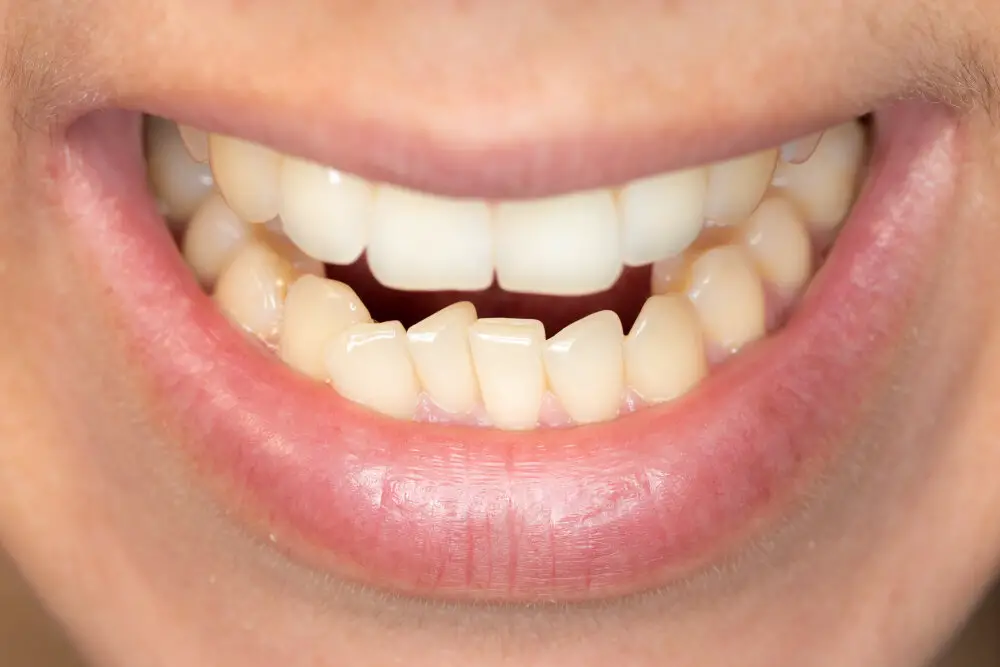
See-through teeth can be a major concern for those who experience it. It can make them feel self-conscious and impact their confidence. However, there are various steps that can be taken to prevent this condition from occurring. One of the most important things to do is to maintain good oral hygiene practices. Brushing twice a day and flossing daily can help prevent tooth decay and gum disease, which can lead to see-through teeth. Additionally, avoiding sugary and acidic foods and drinks can also help protect the enamel of the teeth, which can prevent them from becoming translucent. Another way to prevent see-through teeth is to visit the dentist regularly. Regular dental check-ups can help identify any issues early on and prevent them from becoming worse. The dentist can also provide professional cleaning, which can remove any plaque or tartar build-up that can cause tooth decay. Additionally, the dentist can recommend fluoride treatments, which can help strengthen the enamel of the teeth and prevent them from becoming translucent. By taking these simple steps, individuals can prevent see-through teeth and maintain a healthy, confident smile.
Brushing and flossing regularly are the two essential activities that can help you maintain strong and healthy teeth. Brushing your teeth twice a day effectively removes the plaque and bacteria that have accumulated on your teeth throughout the day. Flossing, on the other hand, helps to clean the areas between your teeth that your brush can’t reach. Neglecting these activities can lead to various dental problems, including tooth decay, gum disease, and transparent teeth. Therefore, it’s crucial to make brushing and flossing a part of your daily routine to keep your teeth healthy and strong.
Using fluoride toothpaste is an essential step in maintaining good oral health. Fluoride is a mineral that helps to strengthen tooth enamel, making it less susceptible to decay and erosion. It works by remineralizing the enamel, repairing any damage that may have occurred. Fluoride toothpaste is widely available and should be used twice daily, along with regular flossing and dental check-ups. It is especially important for those with thin, translucent teeth to use fluoride toothpaste, as their teeth are more vulnerable to damage. By incorporating fluoride toothpaste into your daily oral hygiene routine, you can help to prevent tooth decay and maintain a healthy, bright smile.
Limiting acidic foods and beverages in your diet can help prevent your teeth from becoming translucent. Acidic foods and drinks, such as citrus fruits, soda, and wine, can erode the enamel on your teeth, making them more susceptible to damage and discoloration. Instead, opt for foods that are neutral or alkaline, such as vegetables, dairy products, and water. If you do consume acidic foods or drinks, rinse your mouth with water afterward to help neutralize the acid and protect your teeth. Additionally, consider using a straw when drinking acidic beverages to minimize contact with your teeth. By being mindful of your diet and taking steps to protect your teeth, you can help prevent the development of translucent teeth and maintain a healthy smile.
Regular dental checkups are crucial in maintaining oral health and preventing dental issues such as translucent teeth. During these routine examinations, dentists can detect early signs of dental problems and provide timely treatments. Additionally, regular cleanings help remove plaque and tartar buildup, which can cause tooth decay and gum disease. A comprehensive dental checkup also includes an oral cancer screening, which can detect early signs of the disease. Visiting the dentist every six months is recommended for most people, but those with underlying dental issues may need to schedule more frequent appointments. By prioritizing regular dental checkups, individuals can maintain healthy, strong teeth and prevent conditions such as translucent teeth from developing.
In summary, tooth translucency can be attributed to a variety of causes, including enamel erosion, genetics, aging, and certain lifestyle habits. Enamel erosion can result from acid erosion, tooth grinding, or excessive brushing, while genetics can determine the natural thickness and color of the enamel. Aging can also cause teeth to appear more translucent as the enamel naturally wears down over time. Fortunately, there are several solutions available to combat tooth translucency, such as reducing acidic and sugary food and drink intake, practicing good oral hygiene habits, and seeking professional dental treatments such as dental bonding or veneers. By understanding the causes and implementing the appropriate solutions, one can improve the appearance and health of their teeth.
Maintaining good dental health is crucial to overall well-being, yet it is often overlooked. Neglecting dental hygiene can lead to a variety of problems, including teeth that appear translucent. This can be caused by enamel erosion, which occurs when acidic substances erode the protective layer of enamel that covers teeth. To prevent this from happening, it is important to maintain good oral hygiene practices, such as brushing twice daily, flossing regularly, and avoiding acidic foods and drinks. Additionally, regular visits to the dentist can help identify and address any dental issues before they become more serious. By prioritizing dental health maintenance, individuals can enjoy healthy, strong teeth and a confident smile.
If you are experiencing teeth transparency, seeking professional help is highly recommended. While it may seem minor, it could be an indication of an underlying issue that needs to be addressed. A dental professional can assess the cause of your transparent teeth and provide appropriate treatment, whether it be recommending changes to your oral hygiene routine or suggesting dental procedures. Ignoring the issue could lead to more severe dental problems down the line. Don’t hesitate to reach out to a dental professional for guidance and support in maintaining optimal dental health.
Conclusion
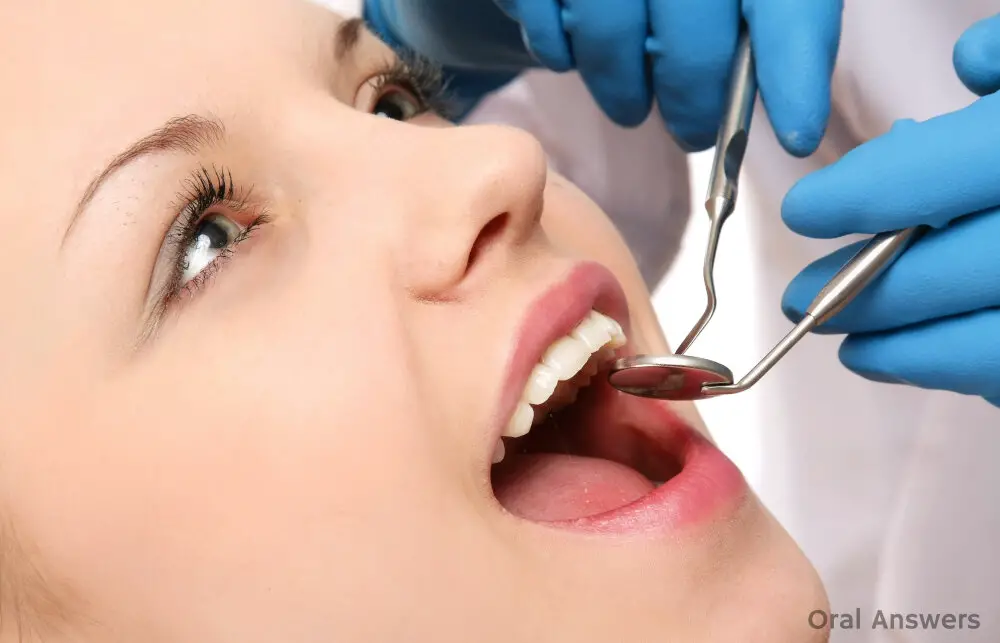
In conclusion, transparent teeth can be a cosmetic concern for many, but it can also be a sign of underlying dental issues that require attention. The causes of see-through teeth can vary, from enamel erosion due to acidic foods and drinks, to genetics and aging. However, maintaining good oral hygiene and avoiding habits that harm your teeth can go a long way in preventing tooth transparency. Additionally, seeking professional dental care, such as dental bonding or veneers, can help restore the appearance of transparent teeth. Ultimately, understanding the causes and solutions of transparent teeth can help individuals take better care of their dental health and maintain a confident smile.
